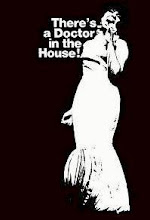 |
| Columbia LP # CS-9185 (1965) |
In the contemporary press, Rheta's LP was not only announced (see the November 27, 1965, issue of Billboard) but also reviewed with much praise: »Rheta Hughes, in her first album, displays an impressive blues and jazz style, a first-rate voice and a flair for proper phrasing.« And in another review: »Rhetta (sic) is a golden and gutsy singer who mastered intonation and phrasing where a young singer should (in a church choir).« (Billboard, December 11, 1965. p. 16). A beautiful example that this praise was well-earned provides the very first song of the LP:
Rheta Hughes w/ Tennyson Stephens:»The Music That Makes Me Dance« from the Columbia LP # CS-9185 (1965):
This song comes from the musical »Funny Girl«, which was first shown on Broadway in 1964, with Barbra Streisand in the title role. But Rheta Hughes, a perfect singer on her first album, made much more of that song than the Broadway production. And this can well be said of all songs we find on her album. Not one of them is less than stunning, and most are prime examples of the so-called Chicago jazz vocal tradition, which was alternatively also called »Soul-Jazz« or »Bluesy Jazz«. Rheta is accompan- ied by Tennyson Stephens on piano, and both had played together in Rheta's church back in Dallas.
On the backcover of the LP we read: »Listen to Rheta ... Let's leave it at that.« There is some irony in these words. Indeed, the album sold little, and Rheta Hughes remained unknown to a larger public. I guess that Columbia somehow made the same mistake with Rheta that they did with Aretha Franklin around the same time: They recorded her, but they wouldn't push her in the market. And as a matter of course they would put her exclusively into the Jazz- or Easy-Listening-corner ... shying away, as it seems, from the then much more profitable markets. Aretha was rescued, in the end, by switching to Atlantic, but Rheta was stuck with it. Even though, one has to admit that most of Rheta's Columbia-recordings are jazzier and, yes, artistically more challenging than anything Aretha recorded for the label. For those of you who aren't convinced of that after hearing the first song above you can try again by listening to two other tunes from Rheta's LP in the following. First »Lost And Lookin'«, a »medium-tempo bluesy number« (that's what the backcover says), then »I Want A Little Sugar In My Bowl«. The latter song was announced in Dom Cerulli's sleeve notes with the words: »Hear Rheta blow hot and sexy on the slow blues«!
Rheta Hughes with Tennyson Stephens:
»Lost And Lookin'« / »I Want A Little Sugar in My Bowl« from the Columbia LP # CS-9185 (1965):The songs on Rheta's beautiful album were produced by Ralph Bass who during his career took part in, and helped to bring about, many a memorable recording; he also was around when the Meditation Singers recorded in Chicago for Chess/Checker Records during the late '60s.
* * *
Rheta Hughes's Columbia-LP did not prove a commercial success and only by hindsight can be judged an artistic success. Back then, she didn't profit much from it. Around the same time, in the mid-'60s, she started appearing on stage as »Rhetta Hughes« what later became her regular artist name. After 1965 she toured through supper clubs and nightclub venues, together with Tennyson Stephens, but they didn't hit it big. Once in a while her name appeared in the rainbow press, e.g. in May 1965 when she was said to have a romance with Tom Jones whom she had met in Las Vegas. In 1969, she recorded another album for the Tetragrammaton-label. This LP has remained rather obscure to this day, although the song »Light My Fire« became a favorite with soul-aficionados.During the '70s, she was involved in several blaxploitation movies (particularly in »Sweet Sweetback’s Baad Asssss Song«, 1971), and during the '80s she met with considerable success when she appeared in a number of musicals, including James Baldwin's »Amen Corner«. Due to her checkered career, however, her name didn't find the resonance it deserves and thus information about her life and art is hard to come by. Most of the standard Jazz- and Soul-dictionaries simply ignore her. This is hard to understand for everybody who has heard Rheta Hughes sing. And her Columbia-LP from 1965 was quite an outstanding debut. Sadly and unjustly, it went by largely unnoticed until the present day.
















OMG I found this album in college and loved it. And I loved HER. Is this available on CD anywhere? Can't find anything on Google - I'd love to be able to hear the whole thing again. Her version of "I'm A Fool To Want You" was always my fav.
ReplyDeleteThanks! Christopher